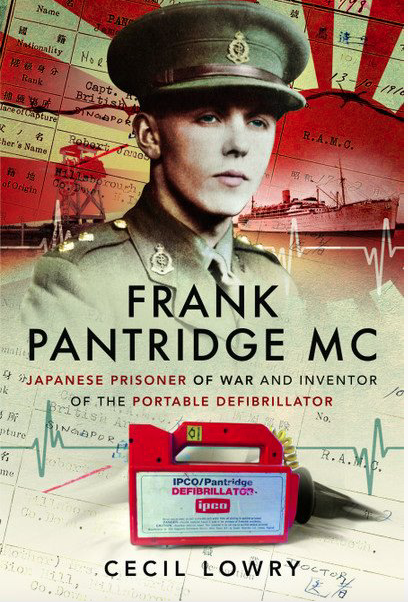Arpan K. Banerjee
Solihull, United Kingdom

Frank Pantridge is not a name that is widely known. His most important legacy is the design of the portable defibrillator, a device that has saved countless lives. In this biography, Cecil Lowry tells the story of this remarkable doctor from Belfast, Northern Ireland. Pantridge survived as a prisoner of war in the notorious Changi prison during the Japanese invasion of Malaya and Singapore in World War II. He then went on to have a stellar career in cardiology, pioneering the use of the portable defibrillator in the care of people with acute coronary conditions.
He was born and educated in Northern England and qualified as a doctor from the Queen’s University Belfast in 1939. As a medical student he contracted diphtheria and developed heart block. This episode fired his lifelong interest in the treatment of abnormal cardiac rhythms.
During the Second World War, he joined the army and was posted to Singapore, which subsequently fell to the Japanese. This harrowing period of history is well documented in the book and the brutal and inhumane experiences as a prisoner of war are movingly described. Cholera, dysentery, and malnutrition were rife. And while Pantridge developed beriberi, it is remarkable that he survived his ordeal.
When the war ended, Pantridge returned to Belfast and initially thought about a career as a family doctor. He obtained a house physician’s job (intern) at the Royal Victoria Hospital and one of his first research projects was studying the effects of beriberi on pig hearts. He then set about obtaining membership in the Royal College of Physicians in 1947. The NHS (National Health Service) came into being the following year and Pantridge noted how beneficial this system was for patients, especially the poor. He then did a fellowship at the University of Michigan, working with electrocardiogram expert Dr. Frank Wilson. Pantridge returned to Belfast and in 1953 became physician in charge of the cardiac department. It is here that he did his pioneering work. Pantridge noted most patients with heart attacks died of ventricular fibrillation.
Electrical shock treatment to the heart could treat this. Kouwenhoven, an American, had invented the defibrillator in 1930. In 1947 it was shown that defibrillation could treat a patient with ventricular fibrillation. Pantridge argued that this should be used at the site of the event or in an ambulance, as by the time patients got to a hospital, they were often dead. In 1965 he set about supplying ambulances with defibrillators, which resulted in better survival outcomes. Portable defibrillator technology continued to improve and the use of this technique in emergency settings revolutionized cardiac management and improved survival.
It is interesting to note that US President Lyndon Johnson’s life was saved in 1972 by a defibrillator designed by Pantridge.
Pantridge did not suffer fools and at times could be a difficult character. He was, however, immensely dedicated to his patients. Ironically, he was well-known abroad for his pioneering work but never received quite the same accolades at home. In 2021, a blue plaque commemorating his life was finally erected outside the Royal Victoria Hospital in Belfast where he had been Professor of Cardiology.
This book is a good read, nicely illustrated, and a reminder of how much is owed this remarkable man.
Frank Pantridge MC: Japanese Prisoner of War and Inventor of the Portable Defibrillator
Cecil Lowry, Pen and Sword Books 2022
ISBN 9781399002929
DR. ARPAN K. BANERJEE qualified in medicine at St Thomas’s Hospital Medical School, London. He was a consultant radiologist in Birmingham 1995–2019. He was President of the radiology section of the RSM 2005–2007 and on the scientific committee of the Royal College of Radiologists 2012–2016. He was Chairman of the British Society for the History of Radiology 2012–2017. He is Chairman of ISHRAD. He is author/co-author of papers on a variety of clinical, radiological, and medical historical topics and seven books, including Classic Papers in Modern Diagnostic Radiology (2005) and The History of Radiology (OUP 2013).
Highlighted in Frontispiece Volume 14, Issue 3 – Summer 2022

Leave a Reply